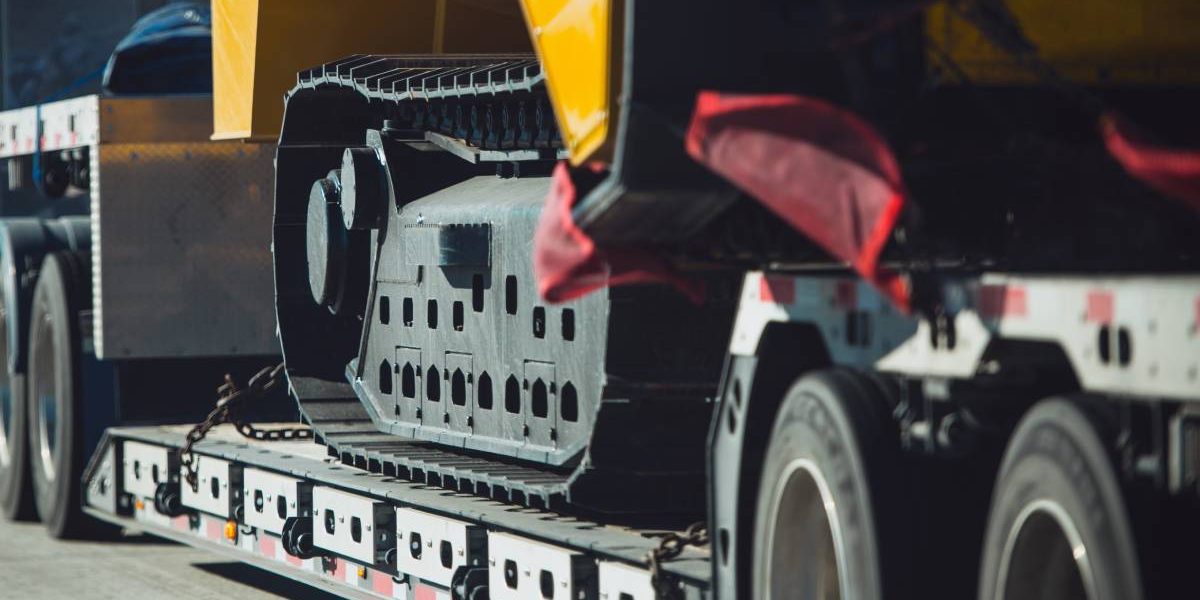Over the expansive landscapes of Australia, transporting your excavator interstate requires careful planning and adherence to safety regulations. In this guide, you’ll learn the crucial steps to ensure that your heavy machinery is securely loaded, compliant with transport laws, and safely delivered to its destination.
From choosing the right transport method to understanding permits and road conditions, this post will equip you with the knowledge needed for a smooth and efficient excavation transport experience.
Types of Excavators
Your understanding of the various types of excavators can significantly impact your transportation choices. Here’s a breakdown of the most common types:
| Excavator Type | Description |
|---|---|
| Mini Excavators | Compact machines suitable for tight spaces. |
| Standard Excavators | Versatile machines ideal for general construction. |
| Crawler Excavators | Sturdy design for rough terrains. |
| Wheeled Excavators | Fast and mobile for urban jobs. |
| Long Reach Excavators | Extended arms for accessing distant areas. |
Perceiving the differences between these types will assist you in determining the best option for your specific project needs.
Mini Excavators
Excavators in the mini category are designed for operating in tight spaces, making them perfect for residential projects and smaller job sites. Their compact size allows for easy maneuverability while still delivering impressive digging power. With varying weight classes, you can choose one that fits your transport requirements and the nature of your work.
Standard Excavators
Standard excavators are versatile machines that cater to a range of construction tasks, providing a balance of power and efficiency without sacrificing mobility.
To further elaborate, standard excavators typically weigh between 5 to 30 tons and boast a digging depth ranging from 10 to over 20 feet, making them suitable for larger construction sites. These machines come with various attachments that enable you to perform different tasks from digging trenches to lifting heavy materials. Standard excavators can handle diverse soil conditions, making them a preferred choice for contractors looking for reliability in various projects.

Factors to Consider Before Transporting
If you plan on transporting your excavator interstate, several factors should be considered to ensure a smooth and compliant process:
- Local regulations regarding oversized loads.
- The driving route and potential obstacles.
- Safety equipment required for the journey.
- Time allowances for travel and rest.
- Insurance options for transport.
Assume that careful consideration of these factors will enhance the safety and efficiency of your transport operation.
Weight and Size Regulations
Factors such as the excavator’s weight and dimensions determine whether you need special permits for interstate transport. Each state has specific regulations regarding load limits for vehicles. It’s vital to check the maximum legal dimensions and weight limits in your intended route states before planning your move.
Route Planning
Little attention to route planning can lead to unexpected complications during transport. Picking the right path can mitigate delays and hazards, ensuring your excavator arrives safely and on time.
Route planning involves assessing not just the shortest path but also recognizing road conditions, height restrictions, and weight limits on bridges. You should utilize navigation tools that account for oversized loads to avoid low bridges and narrow roads. Additionally, consider potential roadwork or detours that may impact travel time. Taking the time to plan your route effectively will greatly enhance the efficiency and safety of your transport operation.
Tips for Safe Transport
Some important tips for safely transporting an excavator include:
- Check state regulations for weights and dimensions
- Ensure all permits are obtained
- Conduct a thorough pre-transport equipment inspection
- Keep your equipment properly maintained
- Use qualified professionals for loading and unloading
Assume that following these guidelines will enhance safety and efficiency during transport.
Secure Loading Techniques
One of the best practices for effectively loading your excavator is to utilize ramps or a low-boy trailer, ensuring the ramps are sturdy and secure. Always use chains and straps to tie down the machine, making sure to cover all critical points to prevent shifting during transit.
Choosing the Right Transport Vehicle
Some factors to consider when selecting your transport vehicle include the weight and size of your excavator, as well as local road regulations. Select a vehicle with adequate clearance and weight capacity to accommodate your equipment comfortably.
With proper understanding of your excavator’s specifications and logistics needs, you can determine whether a flatbed truck, low-boy trailer, or specialized transport vehicle is required. Ensure the chosen vehicle has sufficient tie-down points and reflectors for increased visibility on the road. Ultimately, aligning the transportation method with your excavator’s dimensions will significantly enhance safety throughout the journey.
Step-by-Step Transport Guide
Not all transport methods are equal, and understanding the right process ensures the safekeeping of your excavator. Below is a step-by-step guide to help you transport your excavator without any hassle.
| Step | Description |
|---|---|
| 1 | Choose the right transport vehicle. |
| 2 | Secure necessary permits for road travel. |
| 3 | Prepare your excavator for loading. |
| 4 | Carefully load the excavator onto the transport vehicle. |
| 5 | Secure the excavator properly for travel. |
| 6 | Perform a final safety check before departure. |
Preparing the Excavator for Transport
Assuming your excavator is in good working order, you’ll want to clean it thoroughly to remove any dirt or debris. This step helps to prevent the spread of pests and diseases between regions. Additionally, ensure the fuel tank is filled and check all fluids before securing moving parts, such as the boom and bucket, in place.
Executing the Transport
If your transport vehicle is ready and the excavator is secured, you can begin the journey. It’s vital that you adhere to all transport regulations throughout the trip. Keep a close watch on the load, making necessary adjustments if movement occurs.
It is advisable to plan your route in advance, accounting for height restrictions and road conditions. During the transport, take regular breaks to monitor the stability of your load and ensure everything is secure. If you encounter any unforeseen circumstances, having a backup plan can save significant time and trouble.

Pros and Cons of Different Transport Methods
Keep in mind that each transport method has its own set of advantages and disadvantages. Assessing them will help you choose the best option for moving your excavator interstate in Australia. Below is a breakdown of these pros and cons:
| Transport Method | Pros and Cons |
|---|---|
| Flatbed Truck | Pros: Quick loading/unloading; Cons: Limited weather protection |
| Lowboy Trailer | Pros: Enhanced stability; Cons: Higher transport cost |
| Container Transport | Pros: Secure; Cons: Requires specific dimensions |
| Self-Drive | Pros: Direct control; Cons: Legal and insurance liabilities |
| Rail Transport | Pros: Cost-effective for long distances; Cons: Limited routes |
| Specialized Haulier | Pros: Expertise in heavy transport; Cons: Scheduling limitations |
| Crane Carrier | Pros: Safe for oversized equipment; Cons: More complex setup |
| Mobile Transport Services | Pros: On-site pick-up; Cons: Availability issues |
| Flat Deck Trailers | Pros: Versatile loading options; Cons: Lack of protection from elements |
| Standard Trailers | Pros: Widely available; Cons: Limited to lighter loads |
Flatbed Truck Transport
Cons: While flatbed trucks offer quick loading and unloading, they provide limited protection from the elements. This means your excavator may be susceptible to weather conditions during transit, potentially leading to damage over long distances.
Lowboy Trailer Transport
There’s no denying that lowboy trailers are among the top choices when it comes to transporting heavy equipment like excavators. The lower deck height allows for stability and improved security during transport, making it ideal for oversized loads.
Different factors come into play when selecting a lowboy trailer for your excavator. These trailers are built to handle the substantial weight and size of heavy machinery, which means you’ll benefit from enhanced safety features and experienced drivers who specialize in handling such equipment. Additionally, the ramp-style loading mechanism simplifies the process, ensuring a smoother transition for your excavator. However, be prepared for a potentially higher cost, and check if the trailer meets your needs in terms of weight and height limits.
Common Mistakes to Avoid
To ensure a smooth interstate transport of your excavator, it’s vital to be aware of common mistakes that can lead to significant complications. Many overlook specific requirements, overlook proper permits, or fail to prepare adequately, which could result in delays or legal issues. Arm yourself with knowledge to prevent these pitfalls and ensure a successful transport process.
Underestimating Weight Restrictions
Underestimating the weight restrictions of your transport vehicle can lead to hefty fines and unsafe transport conditions. Ensuring that you are aware of the legal weight limits for your excavator and the towing vehicle is necessary for compliance and safety during transit.
Inadequate Insurance Coverage
One common oversight is not having adequate insurance coverage for your excavator during transport. It’s important to verify that your policy includes coverage for damage or accidents that could occur while the equipment is being moved. Additionally, consider liability insurance to protect against potential damages that could affect third parties.
Common mistakes with insurance can expose you to financial risks that might be easily avoidable. Make sure you thoroughly assess your insurance needs by consulting with a specialist who understands equipment transport. This step will provide peace of mind that your excavator is protected in case of unforeseen events, ensuring that you are covered for transportation risks along the way.
Choosing the Wrong Transporting Company
Selecting the wrong transporting company can lead to delays, damage, or unexpected costs. Not all transport companies have the experience or resources to handle excavator transport effectively. If you’d like an outstanding transporting experience, try using Fillme Free Freight Quotes—a reliable solution for your equipment transportation needs.
Summing up
Taking this into account, safely transporting an excavator interstate in Australia requires careful planning and compliance with regulations. You should ensure your excavator is securely loaded and properly transported, considering factors like weight limits and route selection. Engaging professional transport services can streamline the process and provide expertise in handling equipment.
Always check state laws regarding oversize vehicles and consider using permits if necessary. By following these guidelines, you can facilitate a smooth and secure journey for your excavator.











